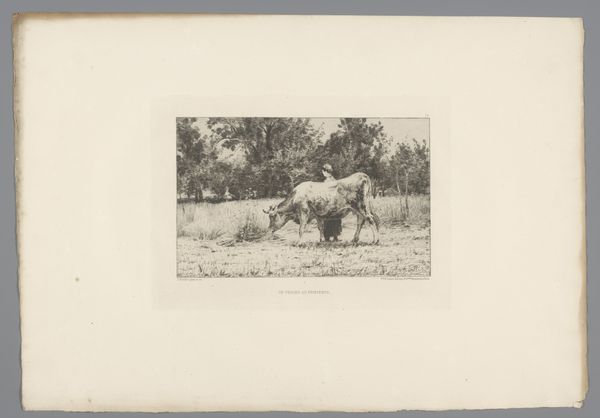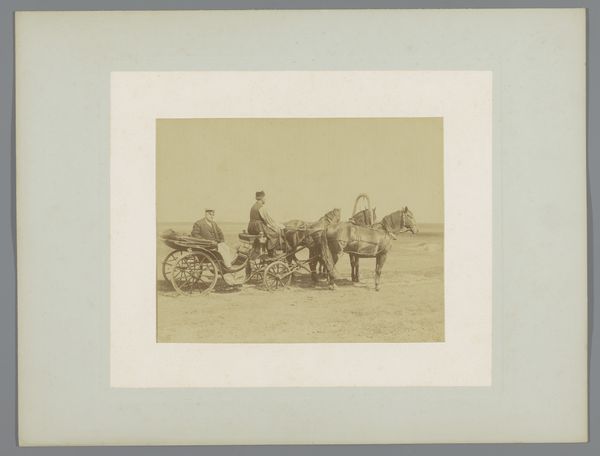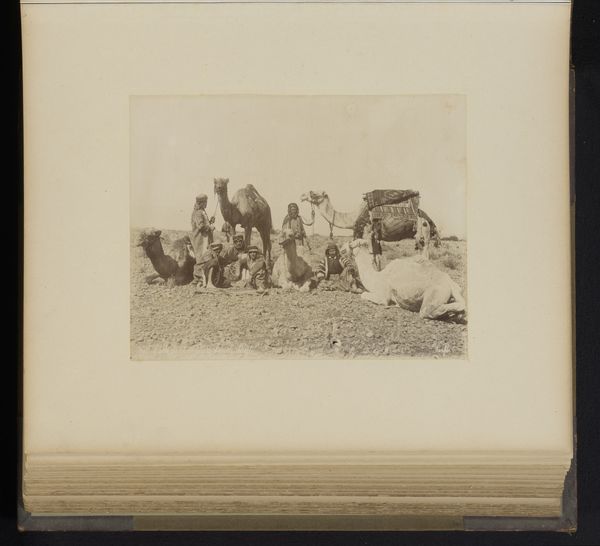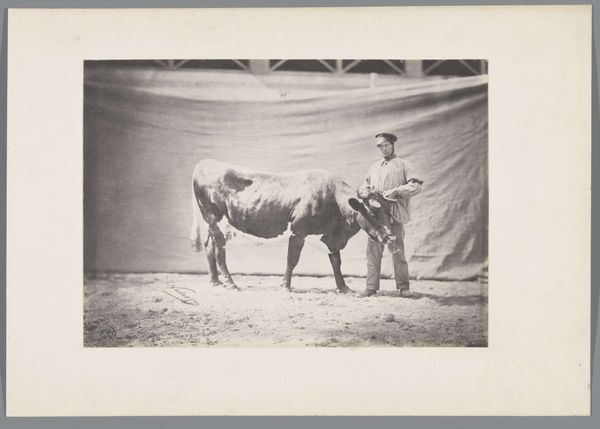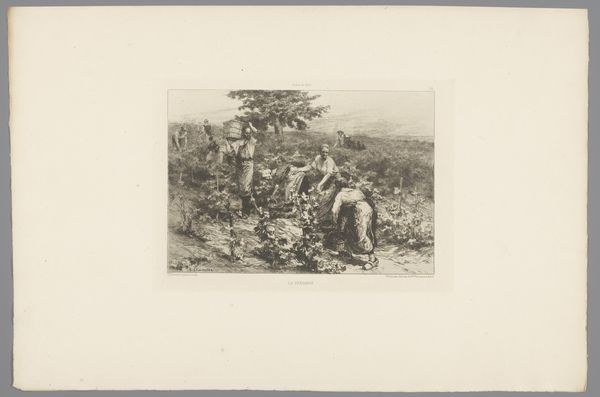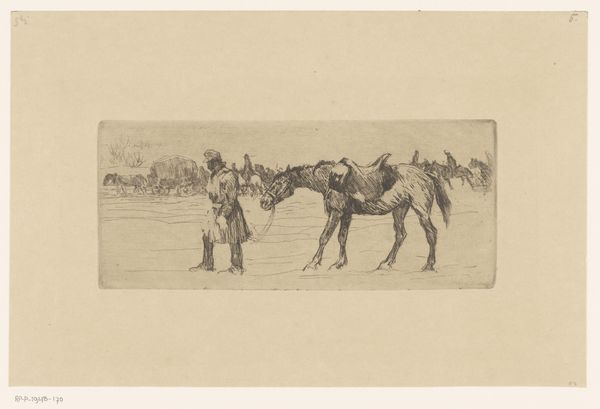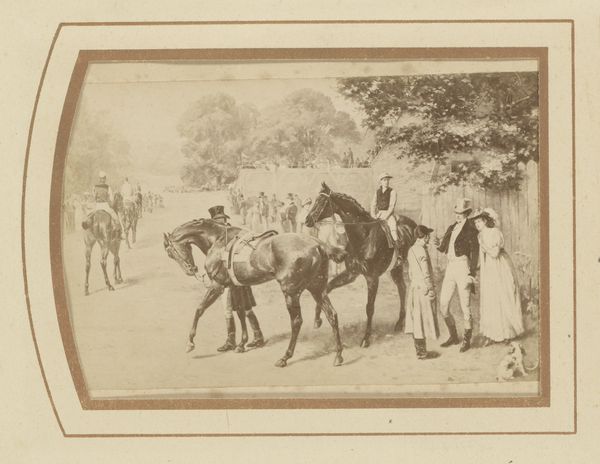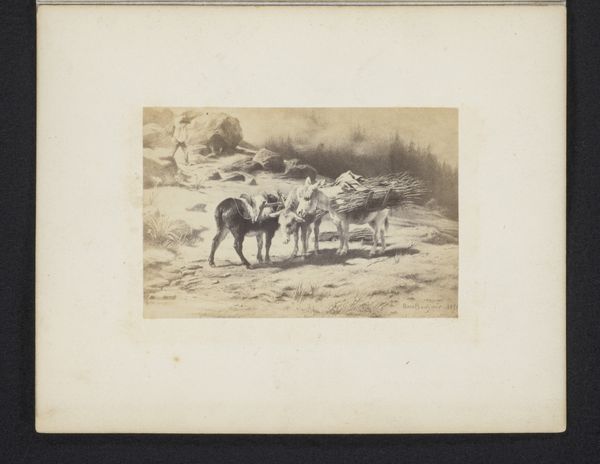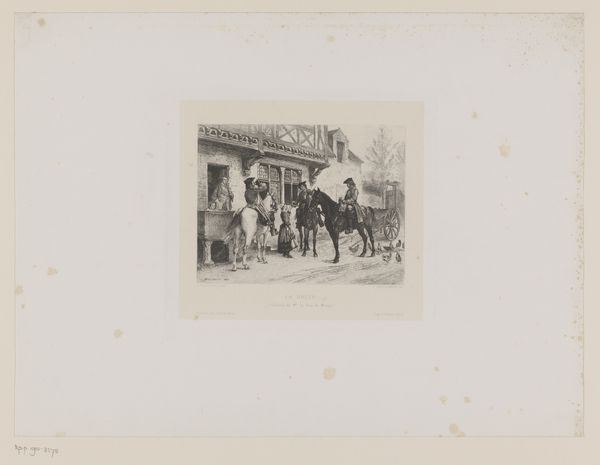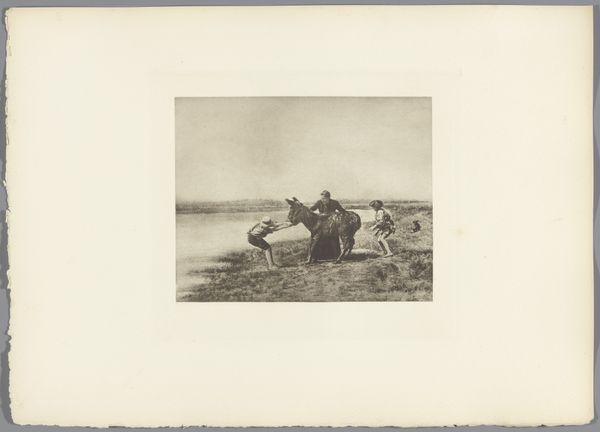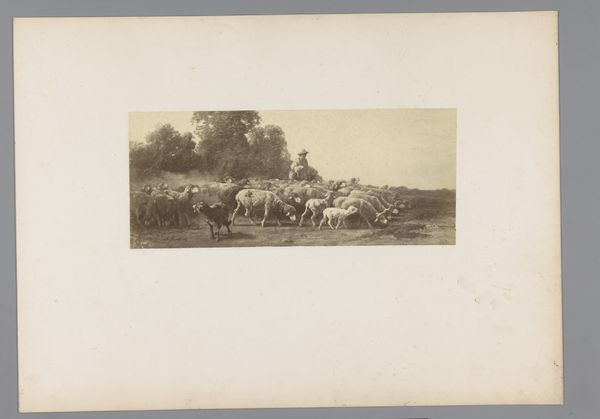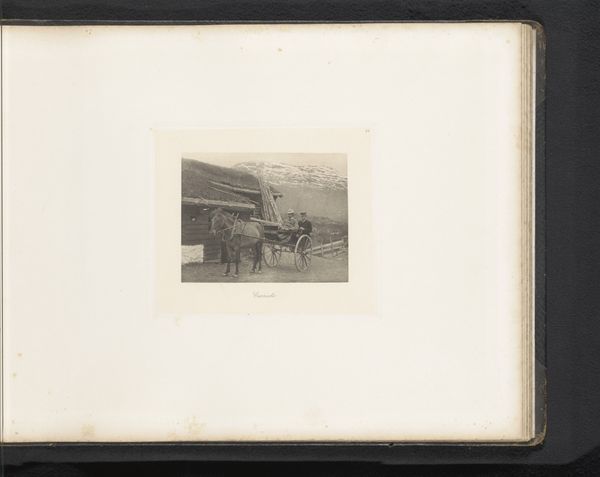
print, etching
#
animal
# print
#
etching
#
landscape
#
genre-painting
#
realism
Dimensions: height 164 mm, width 275 mm
Copyright: Rijks Museum: Open Domain
Curator: I am immediately struck by how stark and muted it is. There is a real melancholic feeling here. Editor: This is "Jachthond met buit" (Hunting Dog with Prey), an etching by Léon Barillot from 1880. It’s interesting, isn't it, to see how genre-painting, typically associated with grand oil canvases, translates into the more intimate medium of printmaking? Curator: It makes me think about what the artist *intended* to capture. An intimate moment in the natural world? An everyday snapshot? The light and shadow create such dramatic contrasts, and this speckled hunting dog is peering down so inquisitively… at a dead hare, and is that a duck too? Editor: It brings up quite a few things for me—mostly issues of labor, power, and ecological impact. The hunt itself is a charged activity, particularly in relation to class structures. Consider the accessibility to hunting lands throughout history, for instance, as they directly related to land ownership and privilege. This dog, though magnificent, is also a tool—performing labor, really, and participating in the violence enacted upon nature. Curator: That’s true, it really encapsulates the fraught relationship we have with nature. Even the detail, the hyperrealism—or *attempt* at hyperrealism in capturing fur and feather—feels tinged with a sort of dark humor. A sort of "Well, aren't we clever in our dominion over nature?” Editor: Absolutely. And thinking about realism, let’s recall the context in which this piece was made. Realism sought to depict life as it truly was. So this work forces a confrontation with the realities of hunting and, perhaps by extension, questions surrounding human dominance, resource extraction, and even mortality. It reflects very contemporary concerns actually, as ideas about climate justice continue to move forward in art. Curator: That interplay between violence and… beauty… is definitely the main source of tension in it for me. This work makes the mind jump around. The quiet landscape suddenly feels rife with complexity, doesn’t it? It definitely pushes back against any naive visions of the pastoral. Editor: It reminds us that behind every pretty picture, every carefully constructed genre scene, there’s always something darker lurking beneath. Always history, power, and the often-invisible structures shaping our perceptions.
Comments
No comments
Be the first to comment and join the conversation on the ultimate creative platform.
